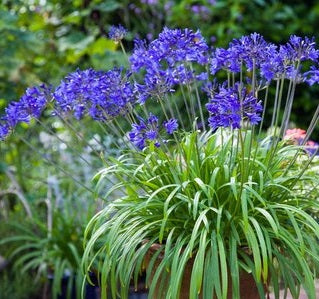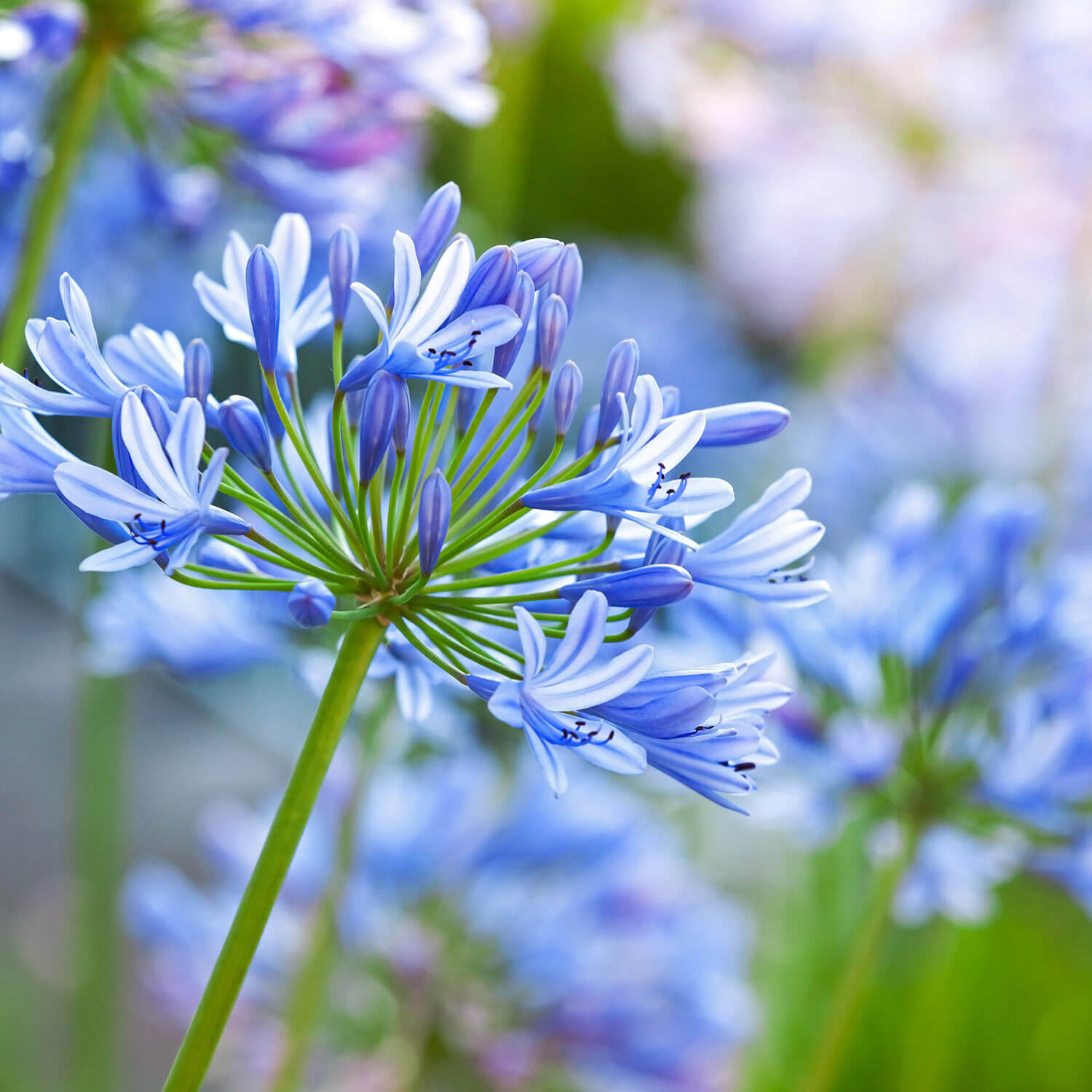Agapanthus Buddy Plants: Perfect Pairings for Your Yard
Agapanthus Buddy Plants: Perfect Pairings for Your Yard
Blog Article
Unleashing the Secret to Effective Agapanthus Farming: Advice for a Flourishing Garden
In the realm of horticulture, growing agapanthus successfully calls for a tactical method that encompasses different elements of plant treatment. By comprehending the subtleties of agapanthus cultivation, one can develop an atmosphere where these plants grow and bloom perfectly.
Growing Agapanthus: Best Practices
When planting Agapanthus, appropriate dirt preparation is important for ensuring effective growth and development of these lovely blossoms. Agapanthus, typically referred to as Lily of the Nile or African lily, flourishes in well-draining dirt with a somewhat acidic to neutral pH degree - Agapanthus. Prior to planting, it is vital to modify heavy clay dirts with raw material such as garden compost or peat moss to boost drain and offer crucial nutrients for the plants
To grow Agapanthus, choose a place that obtains full sunlight to partial shade, as this will certainly advertise healthy and balanced development and plentiful blooming. Dig an opening two times the diameter of the plant's origin sphere and put the Agapanthus at the exact same deepness it was formerly growing. Gently backfill the hole with soil, weighing down securely to eliminate any kind of air pockets around the roots.
Water the freshly grown Agapanthus thoroughly and continue to maintain the dirt evenly wet, particularly during the plant's energetic expanding season. Agapanthus. Using a well balanced fertilizer once a month can better support the plant's development and blooming. By complying with these ideal practices for growing Agapanthus, you can create a stunning display of these exciting blossoms in your garden
Suitable Soil Conditions for Agapanthus
For ideal development and growing success of Agapanthus plants, making certain the dirt problems are suitable is crucial. Agapanthus flourishes in well-draining dirt with a slightly acidic to neutral pH level ranging from 6.0 to 7.0. This kind of soil permits ample water drainage, stopping waterlogging which can bring about root rot. To improve soil drain, consider adding raw material such as compost or peat moss when preparing the growing website. Furthermore, Agapanthus favors dirt that is abundant in nutrients, so incorporating a balanced plant food during the growing season can advertise healthy growth and lively blossoms.

Watering and Fertilizing Tips
To make certain healthy growth and vibrant flowers, proper watering and fertilizing strategies are crucial for effective Agapanthus cultivation. Agapanthus plants benefit from routine watering, particularly throughout the growing period.
When it concerns feeding Agapanthus, a well balanced fertilizer with equivalent components nitrogen, phosphorus, and potassium can be applied in the spring to advertise healthy growth and flowering. Slow-release plant foods are perfect for giving nutrients slowly over an extended period. Stay clear of navigate here over-fertilizing, as this can bring about too much vegetation development at the cost of Learn More flowers.
In addition, including raw material like compost into the soil can enhance nutrient levels and improve dirt framework, helping in the overall health of the Agapanthus plants. By adhering to these watering and feeding ideas, gardeners can ensure their Agapanthus plants flourish and generate stunning screens of flowers.
Trimming and Deadheading Methods
Correct pruning and deadheading strategies play a vital function in preserving the health and wellness and appearances of Agapanthus plants, matching the important techniques of watering and fertilizing for successful farming. Pruning Agapanthus includes removing spent flower heads, dead or yellowing fallen leaves, and general shaping of the plant to advertise better growth. Deadheading, the procedure of eliminating faded flowers, not just improves the plant's look however additionally urges additional growing.
When deadheading Agapanthus, it is recommended to clip off the flower stem at the base using sharp, clean shears. This procedure reroutes the plant's power from seed production back right into root and foliage growth, promoting a healthier and much more robust plant. Normal deadheading can prolong the flowering period of Agapanthus and prevent self-seeding, which can bring about congestion.
In terms of pruning, Agapanthus generally gain from a light trim after blooming to clean up the plant and urge fresh development. Reducing the invested blossom stems and eliminating any type of dead or damaged vegetation aids keep the plant's vitality and total look. Nevertheless, it is important to stay clear of cutting into the crown of the plant, as find out here now this can compromise its health.

Protecting Agapanthus From Pests and Diseases
Applying reliable parasite and condition management techniques is critical to guarding the health and vitality of Agapanthus plants in growing. One usual bug that influences Agapanthus is the Agapanthus borer, a caterpillar that tunnels into the plant, creating damages to the fallen leaves and blossoms.
Along with pests, Agapanthus are vulnerable to diseases such as origin rot and fungal leaf places. These problems can usually be stopped by ensuring correct drain and staying clear of overwatering. If indications of illness appear, impacted parts of the plant must be quickly removed to stop additional spread. Fungicides might likewise be made use of as a therapy action, adhering to the manufacturer's instructions carefully. By remaining vigilant and addressing pest and disease issues immediately, garden enthusiasts can assist their Agapanthus flourish and thrive.

Verdict
Finally, effective growing of agapanthus calls for appropriate planting techniques, perfect soil problems, sufficient watering and fertilizing, routine pruning and deadheading, and defense from diseases and bugs. By complying with these tricks and suggestions, garden enthusiasts can guarantee a prospering garden filled up with beautiful agapanthus flowers. Agapanthus. Bear in mind to preserve constant treatment and focus to detail to promote the health and long life of these sensational plants
When planting Agapanthus, correct dirt preparation is crucial for ensuring effective growth and growth of these beautiful blossoms.Water the newly planted Agapanthus thoroughly and continue to keep the soil equally wet, especially during the plant's energetic expanding period.For optimum development and growing success of Agapanthus plants, ensuring the soil conditions are suitable is crucial. When hair transplanting or growing Agapanthus, make certain the dirt is well-prepared to give the necessary structure for the plants to develop themselves efficiently. One usual parasite that influences Agapanthus is the Agapanthus borer, a caterpillar that passages right into the plant, causing damage to the leaves and blossoms.
Report this page